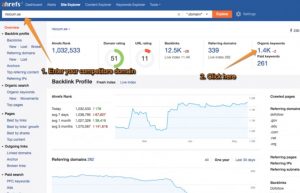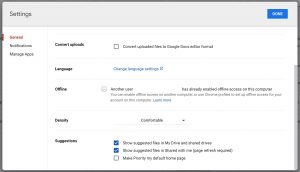Whether you’re a small business or Fortune 500 company, properly forecasting your company’s growth is one of the most important educated guesses you’ll have to make year after year.
“For small businesses to grow and succeed, they should adopt new trends that make consumers loosen their pockets,” says Shashi Bellamkonda, a small business expert and adjunct lecturer at Georgetown University. “This is also a great time to harness the power of the Internet to grow. Consumers are more connected than before with mobile and faster devices. [Small business owners] should also think global. It’s a great time to think about growth this year.”
As it turns out, most small business owners (57%) are expecting growth in 2015, according to Wasp Barcode’s State of Small Business Report, and 29% are expecting at least a 5% growth. But how did these business owners come up with their growth rates? This can be a tough skill to develop if you don’t crunch numbers for a living. Nevertheless, a well-educated guess is needed to prepare for the months and years ahead and the overall health of your business. You will need to consider a variety of factors, from what your expenses look like to market and stock market cycles. You also need to look at multiple scenarios that can have a hand on your business’ performance, think big, but also err on the side of caution when it comes to growth predictions.
Forecasting growth rates is never a certain approach, but you can certainly learn how to make an educated guess. Below are four steps to predicting the future of your business:
1. Know your expenses. Before you can forecast future profits, you first need to know your baseline or your current expense situation. Make it a habit to record all of the following information: fixed expenses, variable expenses, revenue, gross margin, and interest rates. When looking at these numbers, if anything changes drastically, you’ll be able to know immediately that your predictions need to be re-evaluated.
If you are in the early stages of your business, forecasting expenses is much easier than forecasting revenues. Record, calculate, and think about the following costs: rent, utilities, phone, accounting, legal, technology, staffing, advertising and marketing, and goods.
According to an article in Entrepreneur, there are three rules of thumb you should keep in mind when forecasting expenses:
- Always double your estimates for advertising and marketing.
- Always triple your estimates for legal, insurance, and licensing costs.
- Keep track of direct sales and customer service time as a labor cost because this information will be crucial as your company grows and you attract more clients.
2. Consider multiple scenarios. Now that you know your baseline, you can predict your future growth. In short, you want to predict how many units you’ll be selling this year and how much that will cost you. Whatever your guess is will determine how much profit you expect to make. When considering multiple scenarios, think about the following: price point, staffing costs, marketing and advertising needed for the units to sell.
Consider the growth rates you’ve experienced in previous years, make an educated guess about your growth rate this year, then run the same baseline numbers but using flat sales, above-average growth, and negative growth.
3. Think big, but err on the side of caution. All business owners need to remember that in order to get big results, they need to think big! By having ambitious forecasts, you’re more likely to achieve big results. However, it’s also important to keep in mind that anything can happen in business, and it’s crucial to err on the side of caution — even when thinking big. Even if you think that your company will grow at a certain rate, it may be smart to downplay that revenue growth expectation, according to an article on The article states:
“While the company’s revenue growth will stay strong in the first few years, it could slow to a lower rate by Year 5 as a result of increasing international competition and industry commoditization. We should err on the side of caution and conservatism and assume that The Widget Company’s top line growth rate profile will commence at 20% for the first two years, then drop to 15% for the next two years and finally drop to 10% in Year 5.”
4. Take a look at consumer spending. For clues on where the economy is headed, take a look at consumer spending since it accounts for two-thirds of the U.S. economy. To get a better idea, management consultant Robert A. Morris points to Joseph Ellis’ book Ahead of the Curve. Ellis was a Wall Street veteran and former partner at Goldman Sachs for decades and in his book, he breaks down how small business owners can use economic indicators to forecast their business’ growth. When consumer spending picks up, so does the demand chain in the economy, especially in terms of the correlations between and among consumer spending, corporate profits, and the marketplace. When looking at data on consumer spending, small business owners need to look at more than one set of data for equitable comparisons.
Ellis writes: “The key point here is that because inventories in the retail, distributor, and factory pipelines grow during periods of strengthening consumer spending and shrink when consumer spending slows, the changes in the industrial production that supplies this system are far more volatile than the changes in consumer spending at the front end of the system.”
In conclusion, forecasting your company’s growth is an important assumption that you’ll be required to make with as much accuracy as possible. Otherwise, your company loses. If you’re unable to provide useful forecasts, investors won’t want to get involved either. Even more, the inability to predict future growth will also stall your decisions when it comes to operational or staffing plans that are crucial to growing your company. Keep these practical methods in mind and, if needed, don’t be wary of adopting business software that can run forecasting models for you.
(216)






